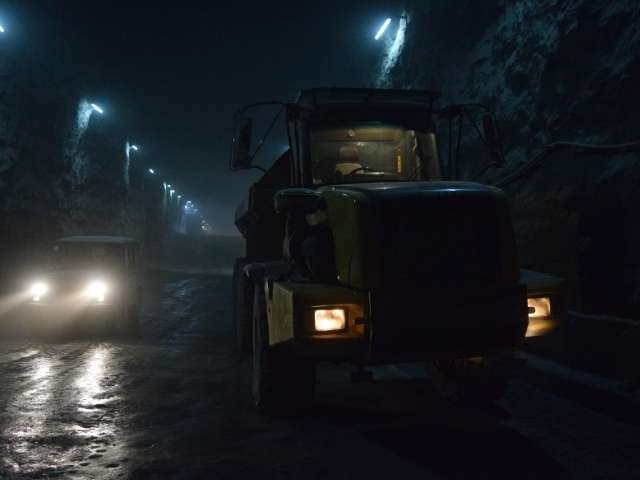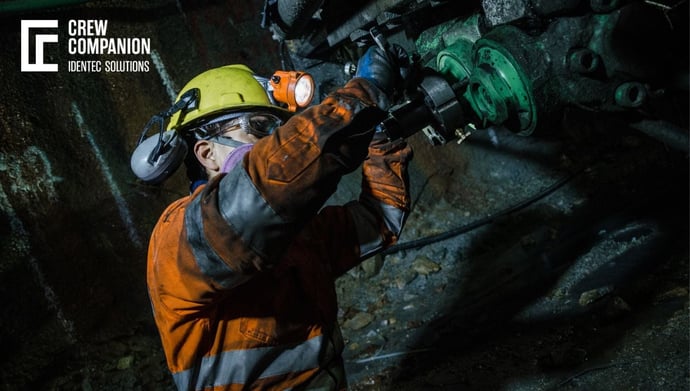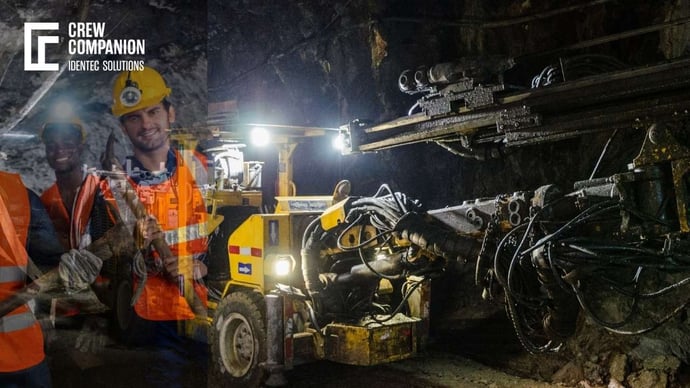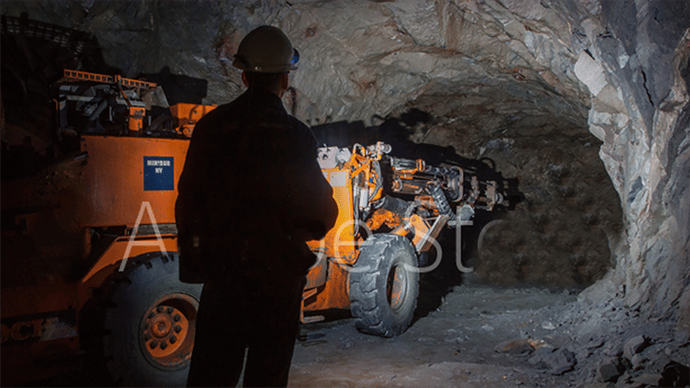Underground Mine Safety: Technologies in Real-World Scenarios
| Written by Mark Buzinkay
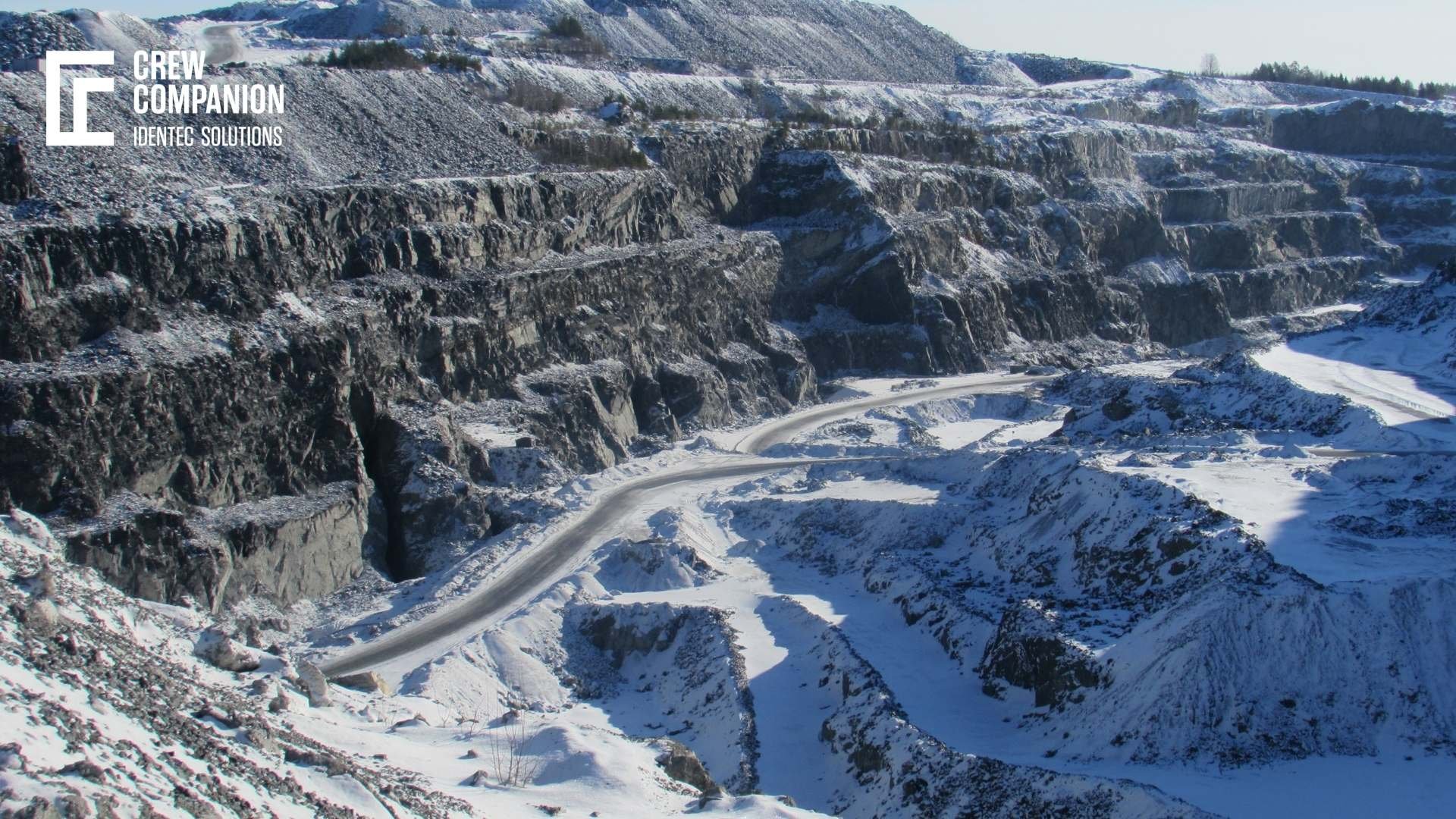
No video selected
Select a video type in the sidebar.
Safety and efficiency are the two building blocks of successful mining operations. Both depend on each other: the safer operations are, the more efficient. The more efficient processes are, the better controlled. As a result, fewer incidents, fewer production stops, and better operational and financial performance will be. As a matter of fact, facilities with an excellent safety record will also showcase higher productivity levels.
Learn more about miners safety in our latest whitepaper!
Nevertheless, mines remain dangerous, and the industry must continuously evolve to mitigate risks on its way to achieving optimal productivity. Improved safety results from stricter regulations and processes, a strong safety culture within an individual company, and high-end technologies that assist in safety-related activities. This post deals with the latter: Technology that increases mining safety.
Underground mine SAFETY or How to AVOID HAZARDS?
Modern technologies have the potential to accelerate safety to another level. We created a list of different technologies and safety aspects to highlight areas for further improvement. These technologies enhance existing regulations, laws and safety standards and propel what is possible in underground and open-pit operations.
The most significant trend: Automation
Everyone in the mining industry is talking about automation these days: Remote control of vehicles, autonomous loading, and automated processes. For safety, it makes a big difference: processes without humans cannot impact their health and safety. For efficiency, the advantages are apparent: working around the clock, planned maintenance, and fewer safety standards.
One big reason is also human failure. If you take human error out of the process, fewer incidents will happen. In general, this contributes to a safer working environment. Remote control or automated machinery doesn't need an operator on that particular machine, sometimes in hazardous areas of the mine. This will automatically decrease safety-related incidents. Today, many machines are capable of being controlled wirelessly, and many more will be to execute their work autonomously. Staying out of harm is the best strategy and mitigates the risks to zero.
The Artificial Assistant: Drones
Drones are a special breed, adding to the trend, as mentioned earlier, of autonomous machinery. Drones explore and measure mines and open pits. Companies are already using drones to create steeper pit slope angles in their mines, planning shorter ramps and more efficient construction work. Other companies, such as LKAB in Sweden, use drones to visually check closed-off areas for signs of deterioration. They also measure changes in structure, debris from rock falls, temperature, humidity, methane gases, and other information that could be safety-related and critical.
Drones can work alone or in groups and enter areas that are dangerous and near-inaccessible to humans, like small holes. Because of their equipment, they can instantly communicate any information they pick up, enabling a detailed and real-time analysis of the mine slopes without having to deploy highly skilled personnel. Again, avoiding hazards is the best recipe for safe operations.

Underground mine SAFETY - MITIGATING HAZARDS
Collision avoiding systems
Traffic accidents are one of the leading causes of incidents in underground and open pits. Darkness, speed, no room to manoeuvre and unexpected turns stimulate dangerous situations. Because observing every sector around a tall and big vehicle is challenging, one promising way to mitigate accidents is to install proximity detection devices. Such devices alarm when a large piece of equipment is getting close to another one. An alarm can lead to an automatic vehicle stop, avoiding physical contact.
Sensoric data
Another aspect of mitigating hazards is observing the environment. Atmospheric monitoring, for example, collects information through leaky-feeder devices and can be used in real-time to warn of immediate or incoming dangers. Airflow is critical to safe mining operations and must be monitored vigilantly. If airflow stops, ventilation is broken and will lead to dangerous levels of CO2, CO and other gases. Air flow must be restored immediately and monitored.
Underground mine SAFETY - How To alert OF HAZARDS?
Wireless underground communications
Before disaster strikes, you can warn. Instead of using old-style hard-wired pagers, switch to a mobile communications system. This is a handheld radio for every worker who has one to communicate with colleagues underground and allows miners (and equipment) to be quickly located. Effective communication and tracking technology are essential in case of an underground accident. This system needs underground infrastructure to work: long tunnels don't go well with radio signals.
Self-contained rescuers
When a disaster happens, life-saving appliances are most important. One such device is self-contained rescuers. They are portable and supply breathable oxygen to miners in case they become trapped underground or poisonous gases leak into mineshafts.
Because many of the most significant mining accidents occur due to a lack of oxygen or the presence of poisonous gases, the standard self-contained rescuers feature an oxygen scrubber removing impurities from the atmosphere to provide a miner with breathable oxygen.
Underground mine SAFETY: TRANSPONDERS
As we have seen, several technologies help avoid, mitigate or warn of hazards in mining operations and thus creating a mining safety framework. However, one class of technology does it all: Personnel transponders. A miner tracking system consists of readers (infrastructure) and transponders worn by each worker. Such a solution not only provides the location information of all personnel underground or in an open pit but also can be used to lock access to hazardous areas.
Transponders are worn by individuals and contribute to a more accurate and consistent picture of what is happening on site. Wearables are not only used in mining but all sorts of industries. For example, work clothing can now incorporate sensors that transmit data to managers about hazardous conditions and the physical condition of the workers themselves, improving safety outcomes.
Even more, transponders tell about the whereabouts of personnel within the mine. This is important in case of an emergency, as well as to declare a zone safe for blasting. As a result, mine operations have become much smoother and more productive than ever before. Transponders based on RFID technology are reliable for handling harsh conditions. LKAB, the Swedish mining giant and biggest producer of iron ore in Europe trust in such an RFID-based system to track miners in depths of over 1000 meters. LKAB can be considered a high-tech company: hundreds of kilometres of roads, rail and other connections are built in their mines, equipped with sensors, connected with communication, power and internet lines deep down to their control centre and within all production levels. Despite having the most advanced communication technology in place, they still rely on RFID for this use case: Securing zones before blasting and being prepared for emergencies. The basic idea is the same: providing visibility deep into the mine.
Read more about LKAB's approach to sustainable mining
Another Swedish mine uses the same technology for access monitoring and surveying emergency shelters. One exciting aspect of using such a transponder-based system is evaluating emergency and evacuation drills, monitoring the performance of each workforce member and coordinating the rescue mission through the same system. Seeing where people are in the mine drastically shortens the time to find trapped, lost or injured people.
After the tragic mining incident in Chile in 2010, when 33 miners were trapped for two months underground, legal requirements made it mandatory to have a miner tracking solution in place. MiningTag, a Chilean company, offers a safety solution with Identec Solutions' Crew Companion to monitor personnel and all vehicles in the vast mines of Chile and Peru.
In all these cases, trust plays a significant role. Personnel must trust a safe solution to be happy to work in a hazardous environment. All these companies rely on this system and build their safety reputation on top of it. Combined with the above-mentioned technologies, incidents and injury rates have fallen continuously in the last twenty years. The Swiss Hagerbach Test Gallery researches mining and tunnelling technology and uses the same technology to track their workforce and about 20.000 yearly visitors to their underground installations. When mining safety experts trust a safety solution, that says something about the reliability of a system.
FAQ
How do transponders enhance underground mine safety?
Transponders are essential in increasing underground mine safety by a Mile through real-time tracking and monitoring of miners' whereabouts. This technology utilizes radio-frequency-identification-based systems in transmitting real-time data regarding each Miner's whereabouts to a central control center, hence ensuring the management can easily locate personnel in case of emergencies. With the precise real-time information of every employee, it will facilitate efficient rescue operations in case of any incident from a cave-in to a fire and ensure that no one is left behind. Apart from this, transponders restrict access to dangerous areas and enable access to certain areas according to permission granted to the employees. The contribution that transponders can make to the safety framework becomes greatly needed integration when teamed with other technologies in safety, particularly atmospheric monitoring systems and emergency communications tools. This makes for a less risky working environment, bringing about a decrease in accident rates and an improvement in response times.
What role do drones play in underground mine safety?
quipped with cameras, sensors, and real-time data transmission capabilities, drones can navigate tight spaces to reach remote areas of a mine to conduct visual inspections and gather critical environmental data. It is especially useful in structural integrity assessment, hazard forensics, and condition monitoring with respect to gas levels, temperature, and humidity. With the aid of drones, mining operations can minimize the need for human entry into high-risk zones, thereby reducing the risk of accidents. Aside from that, drones could do mapping and surveying, providing real-time data regarding the lay and condition of the mine. This serves for strategic planning and helps in risk management. Using drones in underground mines improves safety due to easy and fast hazard identification and maintenance procedures, making mining safer and much easier.
TAKEAWAY
RFID-based transponders are at the core of safety solutions that track miners to provide visibility deep under, proven by solid use cases in the mining industry. Combined with other cutting-edge technology, mining safety is on its way to zero harm.
Dive deeper into one of our core topics: Mining Safety
Glossary
The mine drone - is a class of drone developed for specific mining applications, including stockpile measurement, surveying, mapping, and inspections, which may include ultrasonic testing for thickness measurements.
Mining is an inherently hazardous occupation, and the conditions at the worksite are constantly changing. There are different hazards for underground and surface mining. While mine drones cannot eliminate all the risks involved in conventional mining, they can access and collect data from areas that are inaccessible to humans. Unlike consumer drones, mine drones are fitted with the ability to fly without GPS-a very important feature for flying in areas where GPS signals are absent, such as underground mines.
Sources:
(1) https://www.mdpi.com/1424-8220/23/9/4294
(2) https://wingtra.com/drones-for-mining/?srsltid=AfmBOoolu0FpCA2t8B2b1B5WY2Ju1dxdjy3aVABPHv9u_ez1yrQXnH63
Note: This article was updated on the 14th of January 2025

Author
Mark Buzinkay, Head of Marketing
Mark Buzinkay holds a PhD in Virtual Anthropology, a Master in Business Administration (Telecommunications Mgmt), a Master of Science in Information Management and a Master of Arts in History, Sociology and Philosophy. Mark spent most of his professional career developing and creating business ideas - from a marketing, organisational and process point of view. He is fascinated by the digital transformation of industries, especially manufacturing and logistics. Mark writes mainly about Industry 4.0, maritime logistics, process and change management, innovations onshore and offshore, and the digital transformation in general.
